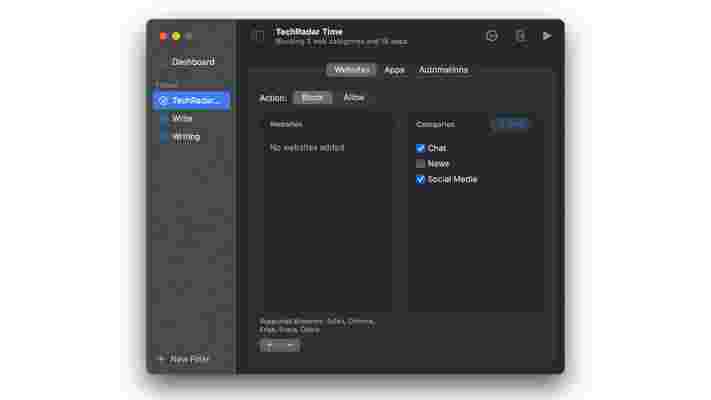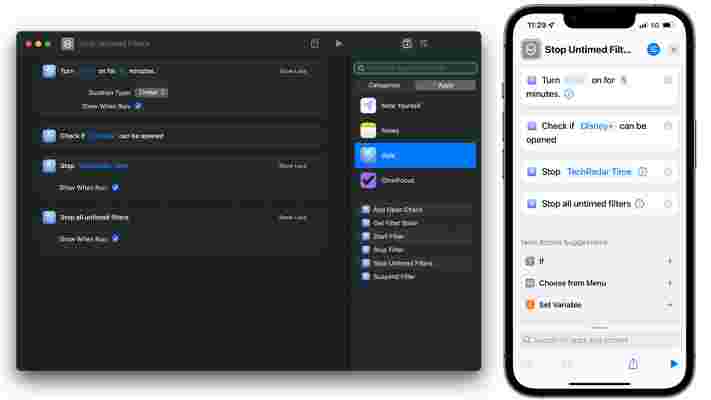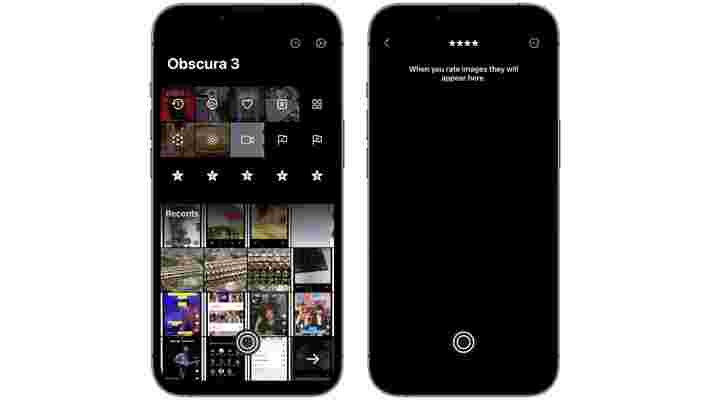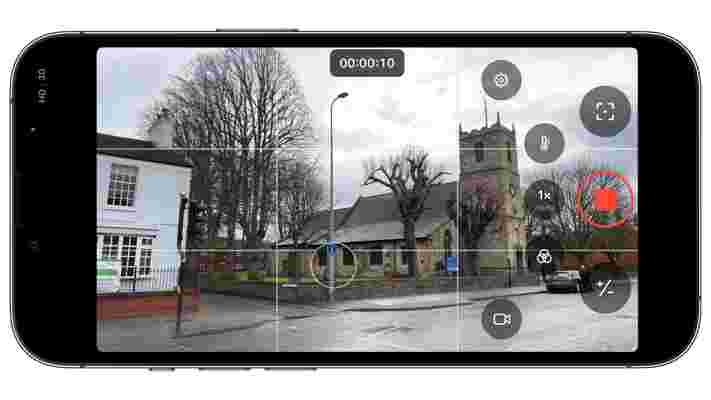The official trailer for Fantastic Beasts 3 has arrived – and the Wizarding World is about to be torn in two, based on the film series' newest teaser.
Originally set for release on February 24, but delayed by four days (presumably in light of Russia's invasion of Ukraine), The Secrets of Dumbledore's trailer teases a much darker entry in the Harry Potter spin-off film franchise than we've previously seen.
Check out the new Fantastic Beasts: The Secrets of Dumbledore trailer below:
Given the content on show in the film's final trailer, it's understandable why Warner Bros. elected not to release it earlier this month. The Secrets of Dumbledore's latest teaser is packed with footage of multiple wizard battles as Albus Dumbledore (Jude Law) and Gellert Grindelwald (Mads Mikkelsen) seek to prevent and destroy the world of Muggles respectively.
A teaser trailer for Fantastic Beasts 3 was released in early January , giving us our first proper look at Mikkelsen's Grindelwald after he replaced Johnny Depp on chief villain duties. Depp departed the project following an unrelated legal case against him in November 2020, with Mikkelsen announced as his replacement that same month.
As the film's trailers have revealed, other key cast members will reprise their roles from previous Fantastic Beasts movies. Law, Eddie Redmayne (Newt Scamander), Ezra Miller (Credence Barebone/Aurelius Dumbledore), Dan Fogler (Jacob Kowalski), and Alison Sudol (Queenie Goldstein) are among those returning.
Fantastic Beasts: The Secrets of Dumbledore will launch exclusively in theaters worldwide on Friday, April 8.
Analysis: is 2022 the year of the Harry Potter renaissance?

It's been something of a sticky spell for the Harry Potter franchise in the last few years. With series creator J.K. Rowling becoming embroiled in a number of controversies in recent times, it's understandable that some long-time fans have turned their backs on the Wizarding World's multimedia empire.
Despite those former Potterheads ending their support for Rowling's works and the spin-offs spawned from it, though, Harry Potter is still a hugely popular series. Fans continue to flock to the Harry Potter Warner Bros. Studio Tour in London each year, as well as the Cursed Child West End stage play – proof that the franchise is still beloved by many. Meanwhile, a first edition copy of Harry Potter and the Philosopher's Stone sold for $471,000 (£356,000) in December 2021 (per Reuters ).
But it's 2022 where the real Harry Potter renaissance could occur. Harry Potter 20th Anniversary: Return to Hogwarts , an HBO Max unscripted cast reunion special, already drew huge numbers upon release on New Year's Day. And, with Fantastic Beasts 3 releasing soon and a new Harry Potter videogame – Hogwarts Legacy – rumored to launch later this year , 2022 could be the best 12-month period (from a cash generating perspective, at least) in the series' history.
Stay focused with a new distraction-filtering app
Only a few weeks into 2022 and we’re seeing plenty of new apps promising to solve your various problems in novel ways. For example, do you sometimes send reminders to yourself by text message? A new note-taking app with a chat interface will make that habit a little bit more convenient. Another app wants to help you stay focused by removing distractions across all of your Apple devices.
Created by Michael Tigas , Ochi was released as a free download on February 1 in the App Store. You can also opt for the Pro version by paying a monthly subscription of $3.99 / £3.49 / AU$4.99, or a yearly one for $19.99 / £17.99 / AU$21.99. You can avoid any subscription fee by purchasing the Pro version outright for the one-time price of $49.99 / £44.99 / AU$53.99.
This new app allows you to create filters for different apps and websites, so you don’t become distracted when you’re trying to finish important work. You can block out certain social media accounts, for example, preventing you from accessing specific apps or associated webpages via web browsers . Ochi lets you pick and choose the apps and web pages you need to be silenced while you focus.
It’s easy to be distracted when you’re using your smartphone, tablet, or computer. While Apple has its own features to assist with distractions - such as Do Not Disturb and the relatively new Focus feature in iOS 15 , which can hide apps and change your home screen - Tigas wanted to create something that goes further.
Having tried Ochi over the last few weeks, I’m reminded of an app I used to use called SelfControl , which was available on my old MacBook Air 2013 machine. SelfControl would automatically close apps and block websites when I was focused on writing my college dissertation.
But Tigas’ app is tailored for the modern age, where you have multiple devices with the same account. If you create a filter to block out Facebook on your iPhone, for example, that same block will carry over to your iPad or desktop iMac without any additional input from you.

And the design of the app on iPhone and macOS is appealing, both simple and colorful, with useful widgets to enable filters or show you how much time remains before Ochi unblocks the apps and websites you’ve specified.
Ochi also shows up in the menu bar on macOS, so you easily pause the filtering if you need to access any of the apps or sites you’ve blocked.
A chat with Ochi’s developer
Speaking with Tigas after the launch of Ochi, I asked what prompted him to create the app.
“Ochi was inspired on a whim, by the idea of blocking distractions across all my devices, keeping me focused when my willpower is at its lowest,” Tigas explained. “During the day, while focusing on a task, I block apps like Twitter on my Mac with the app, Focused Work. But sometimes, I use my iPhone or iPad to test apps that I’m working on. It becomes very easy to doom-scroll with them instead.”
There have been efforts by Apple to look at how we manage our time on our devices, from Focus in iOS 15 to the ScreenTime feature in iOS 13. We asked Tigas what specifically made Ochi different from these and third-party focus apps.
“Rather than motivating people to focus on completing a particular task, Ochi instead helps steer people away from distractions so they can maintain focus for longer periods of time.”
“It’s a flexible utility, that can seamlessly integrate with various workflows, especially if they take advantage of automation capabilities in iOS (and to a lesser extent - macOS),” Tigas said. “You can create timed filters that block access to iOS apps, Mac apps, websites, and categories of websites including Social Media, Chat, and News.
It’s also possible to seamlessly enable filters on your iPhone and iPad from a Mac with Shortcuts - a first in the distraction-blocking space.”

Since Ochi is solving a focus issue by targeting distractions, we wondered in which situations Tigas found the app to be particularly beneficial.
“Outside of work and when it’s time to go to bed, Ochi has been really helpful while I’m playing online games with friends,” Tigas explained. “I sometimes tend to pick up my phone in-between Apex Legends or PUBG matches and disengage with the group conversation. It’s a bad habit, and Ochi keeps me on rails in those fun moments.”
Even though the app has only recently launched, we wondered whether there are any new features under development.
“I’m really excited for the next phase and have kept an open mind about keeping Ochi as flexible as it can be!” Tigas exclaimed. “On the Mac, Ochi can lean on Shortcuts & Focus to automatically block distractions on iOS devices via automation in the Shortcuts app. But since automation support is not available in Shortcuts for Mac, I’m interested in bridging that gap to seamlessly apply filters on the Mac from my iPhone or iPad (or even my Apple Watch).”
Tigas told me that he’d really like to add support for scheduling recurring filters.
“This will be especially helpful with automatically blocking apps like Twitter, Facebook, and Reddit from 1 am onwards, without needing to initiate that every night,” Tigas said.“I can also see people appreciating the ability to block emails at various times during their workday.”
There are better ways to take a photo of your pet in iOS 15, thanks to Obscura 3
Taking photos in iOS has always been a relatively simple affair, just by using the Camera app by Apple. But third-party developers have gone further to make the iPhone camera work harder for you and the photos you take every day.
This is what Obscura has been doing since its launch in 2015. Developed by the Obscura team of Ben Rice McCarthy, Adam K. Schmidt and Sara Lovic, the third version of the app launched this week (February 17) for $9.99 / £9.99 / AU$10.99.
This new version brings a redesigned gallery view, video capture, refined layouts for controlling exposure settings, and the multiple lenses of the iPhone models, alongside controller support. This allows anyone with an Xbox or PlayStation controller, to take a photo through Obscura 3.
Having used the update for a month, it’s a significant improvement over Obscura 2. The new gallery view brings your albums front and center, giving you a quick overview of what you want to select.
There’s also the ability to rate your photos, not just a thumbs up or down as in Apple’s Photos app. Here, you could take a selection of photos, say different locations for a wedding venue for instance, and rate them in order. It makes sorting some photos much easier, as it could help you decide on certain locations or products for those important situations.

It’s the gestures that help make Obscura 3 shine - especially the exposure gesture. As you’re taking a photo, you can press the exposure icon on the bottom-left of the app to change how light or dark you need the image to be. But if you use your thumb to slide up and down on the icon, you can more accurately choose the exposure point instead.
These little touches are found across the app in this third version. While you can’t currently change the default camera app in iOS, Obscura 3 makes a compelling case for why the option should be there for pro users.
A chat with Obscura’s developer
Speaking with McCarthy after the launch of Obscura 3, I asked them whether the pandemic inspired the development of the new update, in regards to features and what users were asking for. “Not particularly. In an ideal world we would have taken a trip to somewhere exciting to take incredible marketing photos of rainforests or glaciers,” McCarthy clarifies. “But for the most part, the production of Obscura 3 wasn’t all that different to Obscura 2.”
With every major update to an app, there’s always the question of what the main objective was for the newest version. We asked McCarthy what the aim was for Obscura this time. “Am I allowed to say everything ? Because we really did throw it all out and start from scratch,” McCarthy continues. “There are obvious changes like the new camera interface, but everything has been rewritten and improved, like the gesture to close the camera, the photo capture pipeline, the filters to support P3 color, I could go on all day.
“If I had to choose just one though, I’d probably say the Image Detail view,” McCarthy reveals. “There’s an astonishing amount of complexity to it. It was honestly pretty janky in Obscura 2. It now has better support for RAW files, depth data, video (for the first time!), and is much smoother at handling changes to the photo library while you’re browsing. The triage features are also really neat if you care about keeping your library organized.”

We wanted to mention the Exposure wheel, which we found very intuitive for allowing certain amounts of light in. We asked McCarthy how this came to be, and why it’s arriving in this update.
“Conceptually, the Exposure and Focus dials were planned from the very start. In fact, I had built a very rudimentary version of them in Obscura 1, but it wasn’t great,” McCarthy explains.
“We played around with the functionality quite a bit. Should the dial have values displayed around the ring? Should the sensitivity vary as it expands? How sensitive should the haptic feedback be? But everything we added made it feel less intuitive and more distracting. In the end, the simpler it was, the more natural and like using a physical camera it felt.”
With the new gallery view being a tentpole feature of Obscura 3, we asked McCarthy whether there was going to be an option for opening the app and having the gallery appear first.
“I had thought of making that an option for the forthcoming iPad version, which is well suited to browsing and editing photos, but I hadn’t really considered it for the phone,” McCarthy explains. “But if we build that functionality anyway, I don’t see why we wouldn’t add it to the phone.”

In-app purchases, or IAPs, are ways for users to buy more features for an app. In previous Obscura versions, this allowed you to buy additional filters, but for Obscura 3, there are no IAPs this time.
We asked McCarthy what the reasons for this were, and if IAPs have had their due, especially for photography apps.
“There were a few reasons behind this decision, benefitting both us and the user. The first is that we wanted to avoid the feeling of upselling, especially when the user is in the middle of taking photos,” McCarthy explains.
“Secondly, the StoreKit API has also been a pain to work with in the past and was the source of more support email than any other part of the app. And thirdly, having IAPs for filters necessitated having example photos for the product pages, and those added quite a considerable amount to Obscura’s download size (O2 was about 70MB and O3 is down to about 5MB, though the sample photos weren’t the only factor).”
The gallery view also shows promise for other Apple platforms, such as macOS, an operating system that doesn’t have an Obscura app. We wondered whether this is something up for consideration.
“I’m certainly not promising anything right now, but I have tried building it for the Mac using Catalyst and it mostly runs without issue,” McCarthy reveals. “The real work would be in making it feel more at home on macOS, so I guess we’ll have to see if we can find the time to make it happen.”
A surprising feature was the integration of controller support in Obscura 3. You could use a Dual Sense controller to take a photo if needed. We asked whether this was always intended and if there are further plans to expand this in the future.
“As I was working on the Apple Watch companion app, it occurred to me that it would be nice if there was an alternative for people who don’t have one. And I had a spare PS4 controller (in theory for playing more games on iOS, though I rarely use it) and I realized that could be a decent alternative,” McCarthy reveals.
“There’s not much functionality there right now, but we have plenty of ideas on improving this feature that just didn’t make the cut for launch.”
Finally, widgets are still being heavily used on iPhone and iPad devices, where you can place bite-sized information on your home screen without launching the app. For Obscura, this seems to be a natural step, especially for rated photos and shortcuts for launching different modes of the app.
We asked McCarthy whether this was something that they were considering. “Definitely. As soon as the launch chaos is over we’re going to start work on widgets, and we already have a few planned,” McCarthy continues. “Having access via the lock screen is a big bonus that widgets also provide. And given that we may never see an option to set third-party camera apps as the default, we have to take what opportunities we can get.”